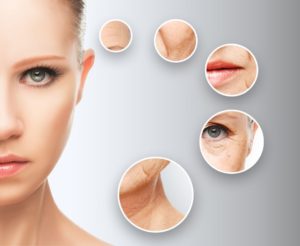This article attempts to unravel the science behind Hyaluronic Acid (HA) fillers. Leveraging advanced scientific understanding, these injectable gels have become integral in the field of dermatology, especially in cosmetic augmentation and wrinkle treatment.
What are Hyaluronic Acid fillers?
Definition of Hyaluronic Acid Dermal Fillers
Hyaluronic Acid Dermal Fillers are injectable gels used to add volume to the skin, often in cosmetic or aesthetic procedures. The filler consists of crosslinked Hyaluronic Acid, a substance naturally found in the human body.
The Role of Hyaluronic Acid in Dermatology
Whether applied topically or injected, hyaluronic acid plays a pivotal role in dermatology, helping maintain hydration and elasticity of the skin. Its superior water-binding properties make HA a perfect candidate for skin rejuvenation and wrinkle treatment.
Types of Hyaluronic Acid Fillers
Several hyaluronic acid fillers are available in the market, each with varying HA concentration, degree of crosslinking, and particle size. These variations define the physical properties and performance of HA dermal fillers, significantly influencing their application. Some renowned brands include Restylane, amongst others.
How do Hyaluronic Acid fillers function?
The Science of Hyaluronic Acid: Hydration and Augmentation
The science of hyaluronic acid is fascinating. Its hydration and augmentation capabilities are a function of its ability to hold thousands of times its weight in water, thereby providing volume and firmness to the skin.
Dermal Filler Injection: The Process
The process of Dermal filler injection is centered on the strategic placement of HA fillers into the skin to achieve the desired augmentation. It involves using a fine needle or cannula to inject the filler underneath the skin surface.
Physical Properties of Hyaluronic Acid Fillers: Viscosity and Extrusion Force
Physical properties of Hyaluronic Acid fillers, such as viscosity and extrusion force, play significant roles in the injectability and longevity of the filler. These properties are determined by factors like the crosslinked disaccharide structure, HA concentration, and the specific formulation of the filler.
What are the benefits and uses of Hyaluronic Acid fillers?
Treating Wrinkles with Hyaluronic Acid Fillers
Hyaluronic Acid Fillers offer an effective solution for wrinkle treatment. By adding volume to areas with line formation, the filers smooth out the skin’s surface, reducing the appearance of wrinkles and fine lines.
HA Fillers for Fine Line Treatment
Smaller HA Fillers are specifically designed for fine line treatment. These fillers may be injected into the superficial layers of the skin, plumping it from below and diminishing the appearance of fine lines.
Cosmetic Augmentation with Injectable Hyaluronic Acid Dermal Fillers
Cosmetic augmentation using injectable HA dermal fillers can restore volume in soft tissues, reshape facial contours, and enhance particular features. It is a practical, non-surgical solution for facial enhancements.
What to consider when choosing Hyaluronic Acid fillers?
HA Concentration and Degree of Crosslinking
The concentration and degree of crosslinking in HA fillers influence their volume-enhancing effect and durability. For instance, higher crosslinking often results in more substantial volume effect and longer-lasting results.
The Importance of Filler Formulation
The filler formulation is a significant determinant in choosing the appropriate HA dermal filler. Aspects like the viscosity, extrusion force, and hydration capacity of the fillers may help physicians reach a decision and can affect the filler’s performance.
Understanding the Disaccharide Structure of HA Dermal Fillers
The disaccharide structure of HA dermal fillers contributes significantly to their physical properties and clinical performance, impacting their hydration capacity and longevity. Understanding these properties allows for more informed decision making when it comes to choosing the correct filler.
Are Hyaluronic Acid fillers safe?
The Food and Drug Administration’s Stance on HA Fillers
Several HA fillers have the approval of the Food and Drug Administration (FDA). However, like any medication or treatment, certain risks and potential side effects must be considered before use.
Common Side Effects of HA Injection
While generally considered safe, HA injection may cause mild, temporary side effects like redness, swelling, and discomfort at the injection site. However, these side effects typically resolve on their own over time.
Ensuring Safety when Using Hyaluronic Acid Fillers
To ensure safety when using HA fillers, it is advised to consult with a trained professional. They will ideally conduct a detailed consultation, considering the individual’s medical history, aesthetic desires, and suitability for the treatment.
*Information in this article is not medical advice and may not be factually accurate. It is intended for entertainment purposes only. Consult with a physician before attempting any tips in this blog post and to get the most up to date factual data about any procedure or treatment.














